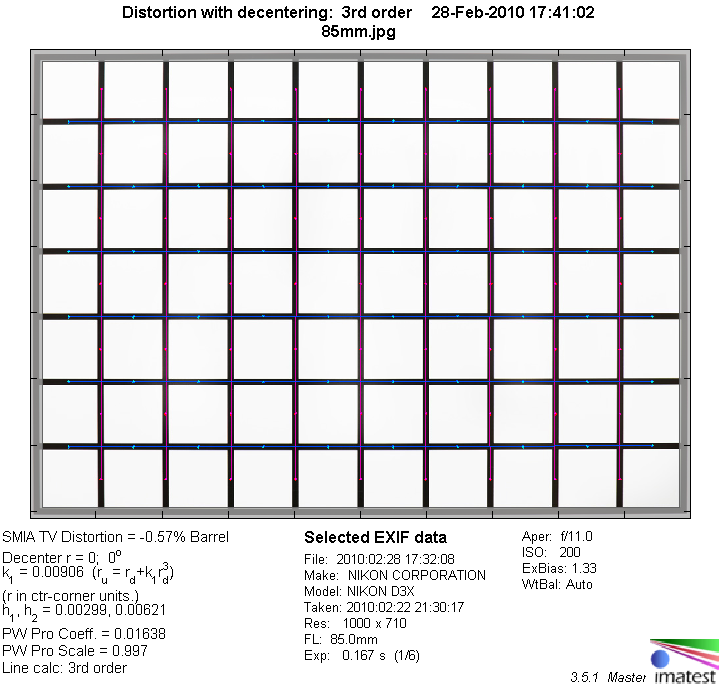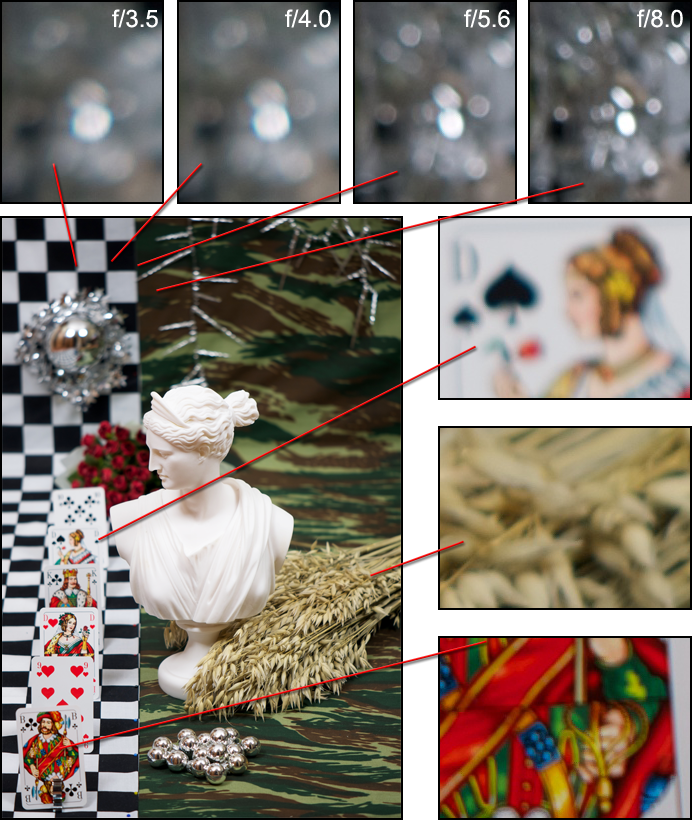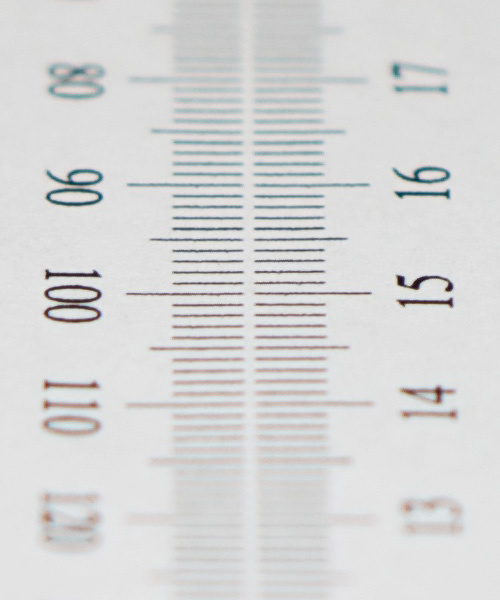|
Micro Nikkor AF-S DX 85mm f/3.5 G ED VR - Review / Test Report - Analysis |
|
Lens Reviews -
Nikon / Nikkor (APS-C)
|
|
Page 2 of 3

Distortion
With just short of 0.6% the lens shows a slight amount of barrel type distortion. This is a little more than what one would expected from a fixed focal micro lens, however for most usage scenarios this can still be regarded as distortion-free under field conditions (unless for really demanding shots like reproduction work).

The chart above has a real-world size of about 120x80cm.
Vignetting
Being a DX lens on the one hand, but with rather moderate speed on the other hand, the Micro Nikkor is not really expected to show heavy vignetting wide open. Nonetheless the lens surprises with very visible vignetting of more than 1 stop in the image corners wide open. Stopping down of course helps to reduce the corner falloff considerably, from f/5.6 onwards it's no longer field relevant.
Please note, that specifically for the vignetting as well as the bokeh section below we also included figures for f/4 to provide a better image of the measured effect.

MTF (resolution)
Macro lenses usually are very sharp and the Micro Nikkor 85 VR is no exception to this rule. The image center shows excellent resolution wide open already until diffraction kicks in at f/16, the image borders and extreme corners follow only slightly behind, starting with very good resolution wide open and reaching excellent sharpness slightly stopped down.
Sharpness decreases towards the lens minimum aperture of f/22 due to diffration, however this is a physical limitation and not a design flaw of the lens.
Please note that the MTFs charts below represent the performance near infinity focus. For the time being macro performance tests are not possible.
Please note that the MTF results are not directly comparable across the different systems!
Below is a simplified summary of the formal findings. The chart shows line widths per picture height (LW/PH) which can be taken as a measure for sharpness.
If you want to know more about the MTF50 figures you may check out the corresponding Imatest Explanations
Chromatic Aberrations (CAs)
Lateral CAs (color shadows at harsh contrast transitions) are very well under control with average values of 0.3 pixels at the image border. This is certainly not field relevant.

Bokeh
Given the rather moderate maximum aperture, the lens is not the primary choice for portraits or similar shots, where subject separation is required. In macro shots however the amount of depth of field is usually very limited, so the quality of the bokeh (the out of focus areas) is of major interest here nonetheless.
Even though the amount of subject separation is limited in our test scenario, the lens produces a very pleasing blur with nice and evenly filled background highlights, which show a bit of a cat's eye shape wide open and develop some outlining when stopped down.
Please note that for this section we also included f/4 shots, an aperture setting that was not measured seperately in the MTF and CA sections above.

Bokeh Fringing
Bokeh fringing shows up as magenta colored halos in front the focus point and green beyond. The Micro Nikkor shows a moderate level of bokeh fringing wide open and stopping down helps to reduce the issue considerably.
|
Move the mouse cursor over the f-stop marks below to observe the respective LoCAs
|
| f/3.5 |
f/5.6 |
f/8.0 |
f/11 |
|

|
|